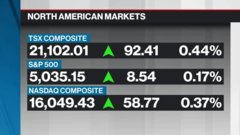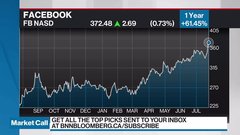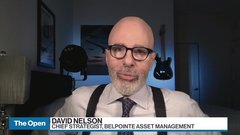Jan 26, 2021
Dot-com era stock valuations bringing bubble fear to ESG funds
, Bloomberg News
How corporations can amplify the 'S' in ESG
It’s reality-check time for ESG funds.
Exchange-traded funds investing in companies with responsible environmental, social and corporate governance practices lured a record US$85 billion in the U.S. and Europe in 2020, and are still raking it in. Pumped up by the flows, stocks in many of these funds are trading at frothy price-to-earnings multiples that are increasingly hard to justify. Take U.S. fuel-cell maker Plug Power Inc., for instance. The unprofitable company’s more than 2,000 per cent rally since early 2020 outpaces even Tesla Inc’s.
“There is a risk that holdings that populate ESG funds have become overvalued,” said Chris Dyer, director of global equity at Eaton Vance. “Investors -- both active and passive -- are increasingly chasing these themes and driving valuation to uncomfortable levels in some cases. This type of naïve investing tends to end badly.”
With the Nasdaq 100 trading near dot-com-era-high valuations of the early 2000s, the likes of Bank of America Corp. are floating warning balloons. And after astronomical surges in shares of renewables -- the poster child of ESG investing -- market players, including JPMorgan Chase & Co., are trying to be more selective to avert the risk of a sudden pullback.
The Indxx Renewable Energy Index is trading at 42 times earnings, double the multiple of the MSCI World Index. Both the MSCI Global Environment Index and MSCI World ESG leaders index are trading at record-high valuations.
ESG funds may underperform if investors move away from overvalued stocks, especially the technology and clean energy shares that fueled the 2020 rally. Their relative performance may also suffer as oil majors, the bete noire of ethically minded investors, make a comeback.
Funds Flood
Last year, a record US$32.8 billion entered U.S. ESG ETFs and 43 billion euros (US$52 billion) went into European ones, according to Bloomberg Intelligence data. About half of new ETFs launched in Europe in 2020 were ESG-focused, according to Citigroup Inc. As of end September, total assets held in sustainable funds reached an all-time high of more than US$1.2 trillion, according to data from Morningstar Inc.
Although they’re lumped together, it’s mostly the E in ESG that’s drawing investor interest. The MSCI Global Environment Index hit a record high in early January following a 93 per cent surge in 2020. While the iShares Global Clean Energy ETF surged 140 per cent last year, some water and gender-themed funds didn’t do as well, Morningstar said.
There’s a lot that can still power the flow into environmental funds. In the U.S., President Joe Biden has pledged to ramp up green energy investments and infrastructure spending. In Europe, much of the US$2.2 trillion pandemic stimulus package is tied to environmentally friendly practices. Amid recovery spending, issuance of green, social and sustainability debt is set to reach US$1 trillion this year, according to Bloomberg Intelligence.
But the flood of funds is raising red flags. The BofA strategists said clean energy ETF flows are creating potential bubbles in stocks like EDP Renovaveis SA, Orsted AS and Verbund AG. The fourth-quarter rally of more than 40 per cent in each of those European utilities coincided with a fourfold increase in flows to the iShares Global Clean Energy ETF.
“While we recognize that these fund flows may continue to drive share prices higher, valuations are no longer supported by our fundamental framework, and we can no longer advise investors to put fresh capital into them,” BofA strategists, including Peter Bisztyga, said in a Jan. 11 report, adding that the flows have “created a bubble in these three stocks.”
EDPR trades at 50 times earnings, Orsted at 55 and Verbund 47.
The rally in Plug Power and other fuel cell stocks led JPMorgan to cut FuelCell Energy Inc. to a sell-equivalent, saying in a Jan. 14 note that the stock is “richly valued” and recommending investors “stay nimble.”
And while the best-performing equity fund in Europe with more than US$1 billion in assets last year, BNP Paribas Asset Management’s Energy Transition Fund, gained about 165 per cent, some investors say such rallies can’t last.
In the U.S., solar and hydrogen-linked stocks have run ahead of their fundamentals, said Deirdre Cooper, co-manager of Ninety One Plc’s 514 million pound (US$704 million) Global Environment Fund, which has outperformed more than 90 per cent of its peers over the past year. “I think U.S. residential solar looks pretty off-the-charts expensive,” she said.
ESG funds focused on the environment are also contending with another problem: greenwashing -- where the benefits of an investment strategy is exaggerated or misrepresented. Pension funds and insurers with more than US$25 trillion say greenwashing is the biggest obstacle to investing sustainably, according to a poll conducted by Schroders Plc.
Such concerns and valuation worries may mean some of last year’s high flyers will underperform this year. But that’s far from a long-lasting decline in ESG funds, said Mike Chen, director of portfolio management and sustainable investing at the quantitative US$37 billion PanAgora Asset Management.
“Decarbonization is a transformation that’s as big as the Internet back in the 1980s,” said Chen. “So this is a major structural theme that’s not going to go away, even if these funds underperform one year.”







